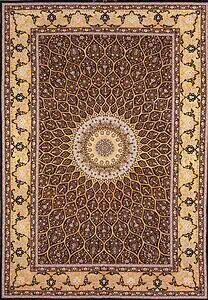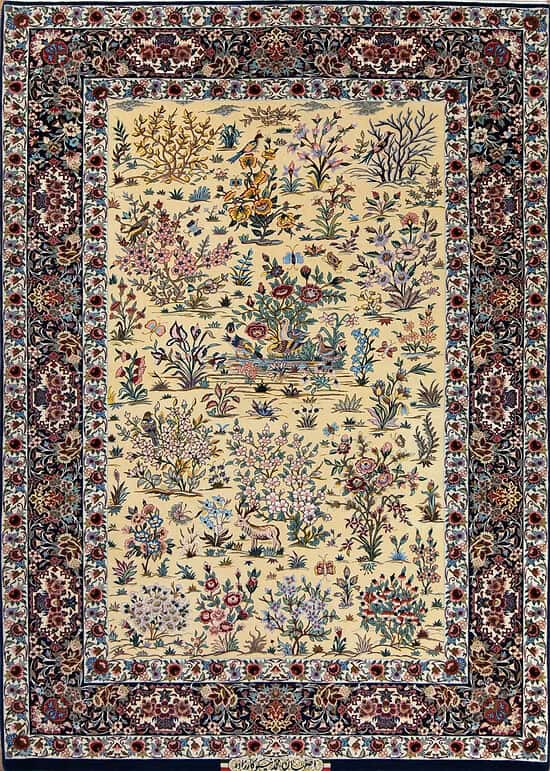
Every handmade rug tells a story — a woven masterpiece of color, culture, and craftsmanship. Yet, even the finest Persian rugs and Oriental rugs are not immune to time. Frayed edges, unraveling fringes, moth damage, and color fading can quietly erode their beauty. That’s where expert rug repair and professional restoration become essential. At Beautiful Rugs Chicago, our master artisans revive your beloved rugs using time-honored techniques that honor their heritage and restore their original splendor.
Whether it’s a Persian Isfahan silk rug, a hand-knotted Bakhtiari wool rug, or a tribal Heriz, professional repair ensures that each piece retains its elegance, structure, and lasting value for generations to come.
Why Expert Rug Repairs Matter
Fine rugs are far more than floor coverings — they are works of art that capture centuries of cultural tradition. When damage occurs, quick and expert rug repairs prevent minor wear from evolving into irreversible loss.
Preserving Heritage and Value Using Expert Rug Repairs
A rug handwoven in Isfahan or Tabriz represents months of meticulous craftsmanship and, in many cases, decades of history. Allowing damage to spread not only compromises the rug’s integrity but also diminishes its collectible and monetary value.
Expert rug repairs safeguard your investment by using authentic materials — from hand-spun wool and natural vegetable dyes to silk foundations — ensuring that the repaired area blends seamlessly with the original weave.
Maintaining Beauty and Function
Expert rug restoration rejuvenates worn colors, reshapes misshapen edges, and reinforces weakened areas, bringing back the harmony of pattern and symmetry. The result is both aesthetic revival and structural strength, allowing your rug to be enjoyed safely and beautifully for years.
Common Rug Damages and How Experts Restore Them
Every rug has unique needs depending on its origin, age, and fiber type. Below are the most common types of rug damage we encounter at Beautiful Rugs Chicago, along with the professional techniques used to restore them.
Frayed Edges and Worn Fringes
Fringes are the backbone of a hand-knotted rug — they are part of the warp threads that hold the knots together. When fringes begin to fray or unravel, the rug’s entire structure is at risk.
Expert Solution: Expert rug repairs and skilled weavers re-knot or re-weave the fringe using matching cotton or silk warp threads. In severe cases, they may hand-sew a new fringe to prevent further unraveling while maintaining the rug’s authentic appearance.
Holes, Tears, and Worn Areas
Heavy foot traffic or accidental damage can create holes or tears in the rug pile and foundation.
Expert Solution: The damaged section is carefully rewoven by hand using matching wool or silk fibers, replicating the original knot density and pattern. This precise work restores both the strength and the beauty of the rug.
Moth Damage and Dry Rot
Moths target natural fibers like wool and silk, especially in rugs stored improperly. Dry rot, caused by moisture, can also weaken fibers.
Expert Solution: Our team meticulously cleans the rug to remove larvae, then reconstructs the damaged pile and foundation. Preventive treatment is used to deter future infestations.
Color Fading and Stains
Sunlight and spills can dull vibrant hues or cause discoloration.
Expert Solution: Experts apply gentle, natural dye restoration or color rebalancing to revive faded areas. Stains are removed using pH-balanced organic solutions, preserving both fiber and dye integrity.
Curling Edges and Shape Distortion
Improper cleaning or prolonged storage can cause rugs to curl or lose their rectangular form.
Expert Solution: Controlled stretching, tension adjustment, and re-blocking restore the rug’s correct proportions without harming the weave.
The Art and Science of Rug Restoration
Repairing a fine rug is a discipline that blends art, engineering, and heritage. At Beautiful Rugs Chicago, our restoration process is guided by respect for traditional craftsmanship and a deep understanding of Persian weaving techniques. Learn more about The Art and Science of Rug Restoration at Met.org
Step 1 – Inspection and Assessment
Every rug is evaluated under natural and artificial light to identify damage, dye conditions, and weave structure. This assessment determines the best restoration approach — whether minimal repair or complete reweaving.
Step 2 – Cleaning and Preparation
Before repair begins, the rug undergoes professional rug cleaning to remove embedded dust, moth eggs, and oils. Clean fibers ensure stronger bonding and a consistent color match in restoration.
Step 3 – Material Matching
Our artisans source hand-spun wool, silk, and cotton that match the rug’s original fiber type and texture. Natural vegetable dyes are mixed to replicate exact color tones, ensuring invisible blending.
Step 4 – Skilled Hand Restoration
Each damaged section is rewoven by hand following the original knot count, pattern, and color sequence. This stage demands precision, patience, and artistry — the hallmark of true Persian craftsmanship.
Step 5 – Final Finishing
After repair, the rug is carefully blocked, brushed, and inspected. A light oiling may be applied to revive the sheen and suppleness of natural fibers. The restored rug emerges revitalized — elegant, strong, and ready to grace your home once again.
Choosing the Right Rug Repair Expert
Not all rug repairs are equal. A poorly executed fix can cause more harm than the initial damage. Look for experts who are experts in handmade Persian rugs, understand regional weaving styles, and use time-tested restoration techniques.
At Beautiful Rugs Chicago, our artisans are trained in traditional Persian methods and have decades of experience restoring antique, vintage, and contemporary handmade rugs from Iran, India, Turkey, and beyond. Each repair honors the rug’s original design while ensuring modern durability.
Professional Rug Care Tips to Extend Longevity
-
Rotate rugs every few months to balance wear and sun exposure.
-
Vacuum gently without using beater bars, to avoid pulling the pile.
-
Avoid moisture; never store rugs in basements or damp areas.
-
Address spills immediately using blotting techniques, not rubbing.
-
Schedule professional cleaning every 3–7 years, depending on use.
-
Inspect regularly for signs of moth damage or unraveling edges.
Consistent maintenance preserves your rug’s integrity and delays costly restoration needs.
When to Choose Restoration Over Replacement
If your rug holds sentimental, historical, or cultural significance, professional restoration is almost always worth it. Replacing a handmade Persian rug with a machine-made replica cannot capture the artistry or emotional value of the original.
A skilled restoration revives the story woven into every knot, allowing future generations to cherish it just as you have.
The Beautiful Rugs Chicago Difference
Located in the heart of Chicago, Beautiful Rugs combines artistry and precision in every repair. Our workshop handles everything from minor edge binding to complete antique restoration, backed by decades of Persian rug expertise.
We treat every rug — whether a museum-quality Isfahan silk masterpiece or a cherished family heirloom — with the same care, respect, and craftsmanship.
Conclusion
A fine handmade rug deserves expert hands. At Beautiful Rugs Chicago, we take pride in restoring beauty and durability to rugs that embody history, culture, and art. Each restoration project is an act of preservation — returning a timeless treasure to its rightful glory.
Your rug’s next chapter begins here.
Contact Beautiful Rugs Chicago today to schedule an inspection or request a quote for professional rug repair and restoration.
FAQ
How do I know if my rug needs repair or restoration?
Look for frayed edges, missing fringes, holes, or color fading. If your rug is handmade or valuable, it’s best to consult expert rug repairs before attempting DIY fixes.
Can an old Persian rug really be restored to like-new condition?
Yes. With expert hands and authentic materials, even antique rugs can regain their strength and beauty without losing historical integrity.
How much does professional rug repair cost?
Costs vary based on the rug’s size, extent of damage, and materials. At Beautiful Rugs Chicago, we offer honest assessments and fair pricing for every repair.





